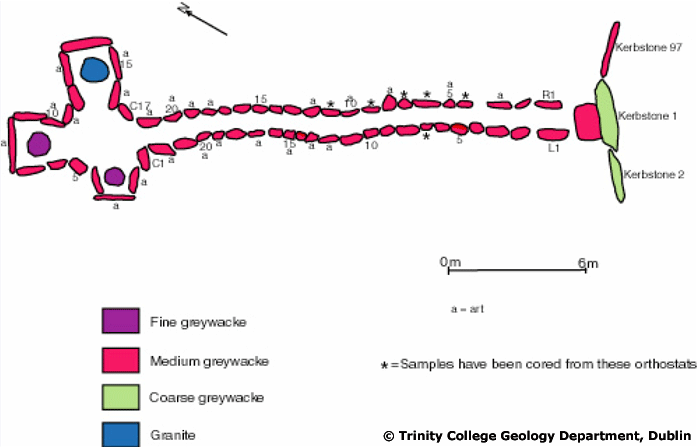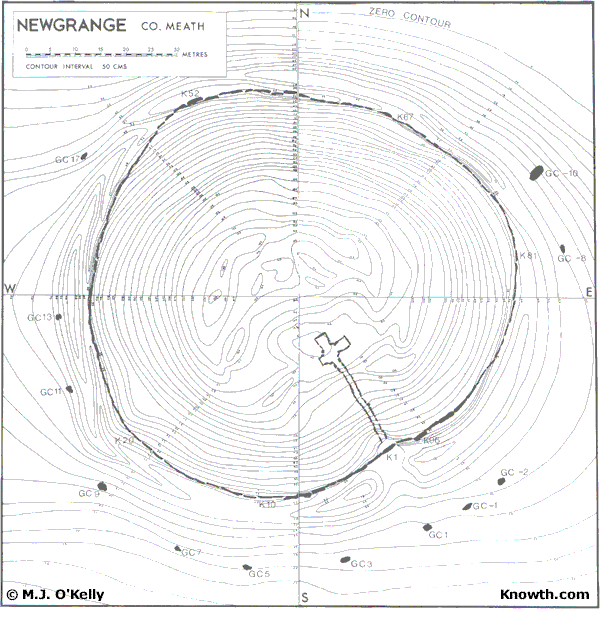Newgrange Passage Tomb Kerbstones
There are 97 stones surrounding the Newgrange mound. Some are decorated with stone carvings called megalithic art. In Professor Michael J. O'Kelly's book Newgrange Archaeology, Art and Legend, the kerbstones are numbered 1 to 97.Click on the thumbnails below to view a larger image of any of the kerbstones. Kerbstones 22 to 46 are still buried. Kerbstones 21, 47, 48, 49 and 50 are only partly visible and several others are leaning forward.
Knowth Kerbstones
At the neighbouring Knowth mound there are 124 surviving kerbstones - View Images.Newgrange Geology
The majority of the stones at Newgrange including most of the kerbstones are Greywacke, a variety of sandstone found on the coast at Clogher Head, north of Newgrange. Geraldine Stout in Newgrange and the Bend of the Boyne states "This type of rock weathers well and provides a good surface for decorating; it is the favoured stone type of the tomb builders. Given the quantity of stone used (c.200,000 tonnes) there must have been organised extraction of this material. Recent research suggests that the greywacke was quarried. Similar stone has been identified in the Lower Palaeozoic Silurian zone which runs between counties Longford and Down and extends to within five kilometres of the area. The precise location of these prehistoric quarries has yet to be discovered. The maximum depth of these deposits does not exceed three metres, so exploitation of many sites would have been necessary. Primitive quarries, if backfilled, would not be easily noticed today"Boyne Valley Private Day Tour
 Immerse yourself in the rich heritage and culture of the Boyne Valley with our full-day private tours.
Visit Newgrange World Heritage site, explore the Hill of Slane, where Saint Patrick famously lit the Paschal fire.
Discover the Hill of Tara, the ancient seat of power for the High Kings of Ireland.
Book Now
Immerse yourself in the rich heritage and culture of the Boyne Valley with our full-day private tours.
Visit Newgrange World Heritage site, explore the Hill of Slane, where Saint Patrick famously lit the Paschal fire.
Discover the Hill of Tara, the ancient seat of power for the High Kings of Ireland.
Book Now
Home
| Visitor Centre
| Tours
| Winter Solstice
| Solstice Lottery
| Images
| Local Area
| News
| Knowth
| Dowth
| Articles
| Art
| Books
| Directions
| Accommodation
| Contact


